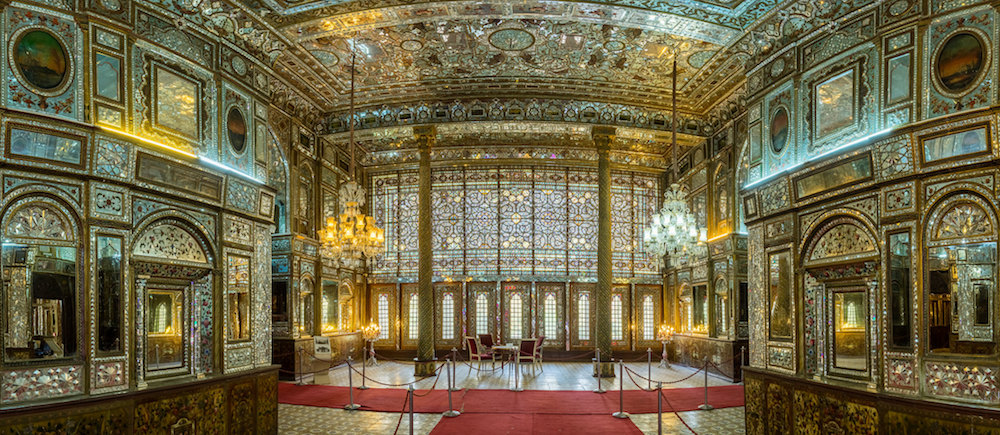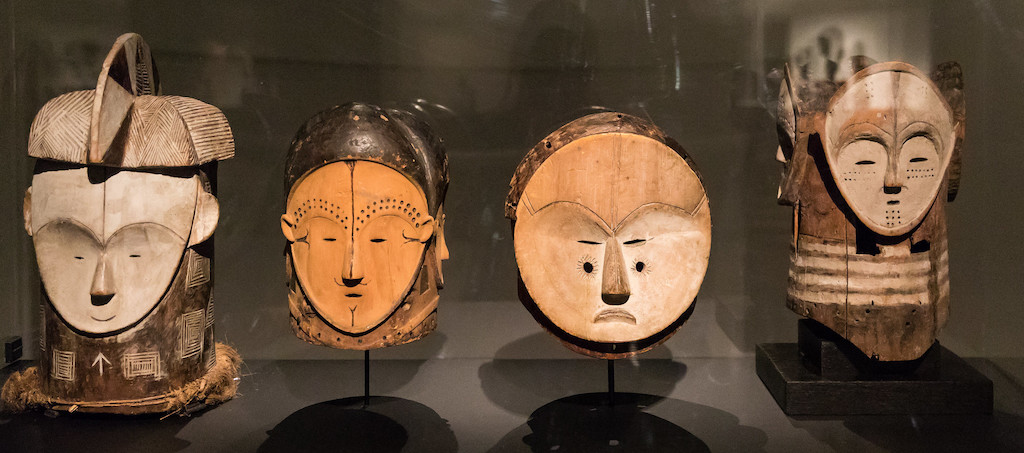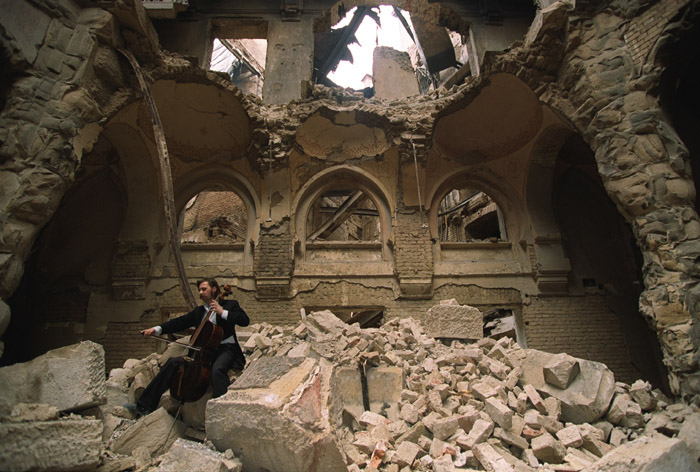Why Targeting Heritage Is a Crime Against Humanity
“A barbarian is someone who looks at culture and finds no beauty at all. A barbarian looks at a mosque or a burial mound, and dreams only of exacting pain.”
—Jason Farago, New York Times critic
Henry Stimson, the U.S. secretary of war during World War II, was a cultured man of the world. When he learned the U.S. was planning to drop its new atomic bomb on Kyoto—an ancient Japanese city he had visited as a young man that brimmed with architectural and artistic treasures—he went to President Harry Truman and insisted it be removed from the target list. Truman agreed, and the “Florence of Japan” was spared.
Whoever we are, whether we have seen Kyoto or not, we are all the richer for that decision, which protected a precious part of humanity’s cultural heritage. And however one feels about the decision to instead bomb Hiroshima and Nagasaki, sparing Kyoto also helped conserve what political scientists call the “soft power”—the reputational force—of the United States.
Stimson took this position nine years before the 1954 Hague Convention mandated the protection of cultural property during armed conflict. He did not need an international treaty to tell him what was self-evident: It is wrong to deliberately or thoughtlessly destroy another nation’s cherished monuments, manuscripts, art, scientific collections, or historic legacy.
U.S. President Donald Trump sees historical heritage differently—not with the refinement of a man who appreciates culture but with the eye of a Mafioso. Its value to him lies not in its aesthetic worth or its ability to encapsulate centuries’ worth of ingenuity, creativity, and meaning. Rather, in these cultural riches, he sees an opportunity for threats, leverage, and retaliation.
That perspective became eminently clear on January 4, when Trump threatened to attack 52 culturally significant sites in Iran, in response to Iran’s vow to avenge the assassination of Iranian General Qassem Soleimani by the U.S.
One also has to wonder if Trump, who routinely disparages non-white people and non-Western (“shithole”) countries, was partly motivated by an unconscious hostility toward non-Western sites—by a desire to make the world’s cultural archive a little whiter.
To understand the significance of Trump’s public threat, it is helpful to think about the cultural gems that have been plundered, damaged, or reduced to rubble in past conflicts.
There are three ways in which war typically destroys a society’s cultural inheritance. The first, and arguably the least reprehensible, is through carelessness or negligence. In these instances, significant sites are not deliberately targeted but become collateral damage during a bombing or shelling campaign. Alternatively, buildings may be looted during the chaos of an invasion.
For example, when the Venetian army was attacking Athens in 1687, a mortar blasted into the Parthenon, where Ottoman forces were storing gunpowder. The subsequent explosion gutted the sculpture-filled sanctuary. During World War II, bombing raids ravaged the Berlin Cathedral in Germany and left Britain’s Coventry Cathedral in ruins. In 2003, thieves looted an estimated 15,000 antiquities from Baghdad’s Iraq Museum, which the invading U.S. Army and the Iraqi government failed to secure. A similar fate befell Iraqi universities, once among the best in the Middle East, when pillagers snatched everything—down to the wiring in the walls.
A second way nations lose their cultural heritage is through state-sanctioned theft. This at least safeguards the treasures, even if they are removed from their rightful place. Thus, Hitler stole art and rare books from private Jewish collections and museums in occupied countries and distributed them to influential Nazis. British ambassador Lord Elgin expatriated marble statues from Greece’s Parthenon, and they have sat in the British Museum for 200 years. The Quai Branly Museum in Paris houses 70,000 art objects that colonists and explorers took from sub-Saharan Africa. (An estimated 90 to 95 percent of Africa’s cultural heritage lies in museums outside the continent.)
Third, countries or combatants demolish works of art and architecture as part of a campaign of terror, often accompanied by ethnic cleansing. Their goal is to wipe out not just enemy bodies but the very identity of a people by attacking their collective memories and traditions. This is a favored tactic of ethnic nationalists and religious extremists such as the Islamic State group (also known as ISIS), which blew up a 2,000-year-old UNESCO world heritage temple in Palmyra, Syria.
One of the saddest and most spectacular examples of such calculated ruination is the Serbs’ shelling of Sarajevo’s iconic public library in 1992. The resulting fire incinerated most of the 1.5 million books, including 155,000 rare tomes and manuscripts, and 21,500 square feet of art adorning the walls and ceilings. Braving sniper bullets, librarians and other citizens formed a human chain to rescue what they could. One volunteer later said, “We managed to save just a few very precious books. Everything else burned down. And a lot of our heritage, national heritage, lay down there in ashes.”
Shortly after, cellist Vedran Smailovic of the Sarajevo Philharmonic Orchestra played “Adagio in G Minor” in the burned-out ruins of the library as an act of remembrance and defiance. “The energy in that building was something sacred,” Smailovic later said. “The building was still breathing, regardless of the destruction. I felt its power, and it made me cry.”
This month, Trump threatened to inflict, in the name of all Americans, dozens of Sarajevos on Iran.
Some people might protest that “all is fair in love and war,” as the saying goes. If hostilities have broken out, order has broken down, and nations press whatever brute advantage they have.
However, even war is an institution regulated by norms, from the chivalric code of medieval knights to contemporary laws governing conflict. Given the weakness of contemporary global organizations, it may not always be possible to enforce these laws. But that does not mean they lack cultural force or that transgressors do not pay a price in the court of public opinion.
Under the laws of war, it is permissible to kill combatants but not to intentionally massacre civilians and prisoners of war. Militaries can bomb airfields and weapons depots but not civilian water treatment plants. And it is a war crime to deliberately destroy heritage sites and objects. That is partly because these
All armies have targets they consider off-limits as a matter of principle.
masterworks are seen as the legacy of all of humanity, but also because to attack them is to turn military engagement into cultural extermination.
According to the 1954 Hague Convention for the Protection of Cultural Property in the Event of Armed Conflict, warring entities must “take all possible steps to protect cultural property,” including “monuments of architecture, art, or history, whether religious or secular.”
The Hague treaty was created partly in response to the Nazis’ methodical attacks on beloved landmarks, such as the near obliteration of Warsaw’s Old Town as an act of retribution for the Warsaw Uprising of 1944.
Historians have observed that the 20th century saw the rise of “total war.” In this form of conflict, the “battlefield” is potentially everywhere, and entire populations are mobilized, with the aid of mass media, to hate one another. It is easy to see how such wars, increasingly energized by chauvinistic identities, might lead to the militarized vandalism of a society’s cultural patrimony.
But the 20th century was also the era of the Geneva Conventions and of rising international appreciation for the exquisite range of human civilizations. All armies have capabilities they choose not to indulge and targets they consider off-limits as a matter of principle. The precious heritage of others—even enemy others—is widely accepted as being among those. Surely humanity has seen enough mosques, archaeological sites, museums, and libraries looted and razed in this century’s Middle Eastern wars without purposely adding to the toll.
Wherever we are from, if our grandchildren are to live in peace with the grandchildren of people currently cast as our enemies, and if they are to take pride in their forebears, we should follow Stimson’s lead and stand up for humanity’s collective heritage.
































